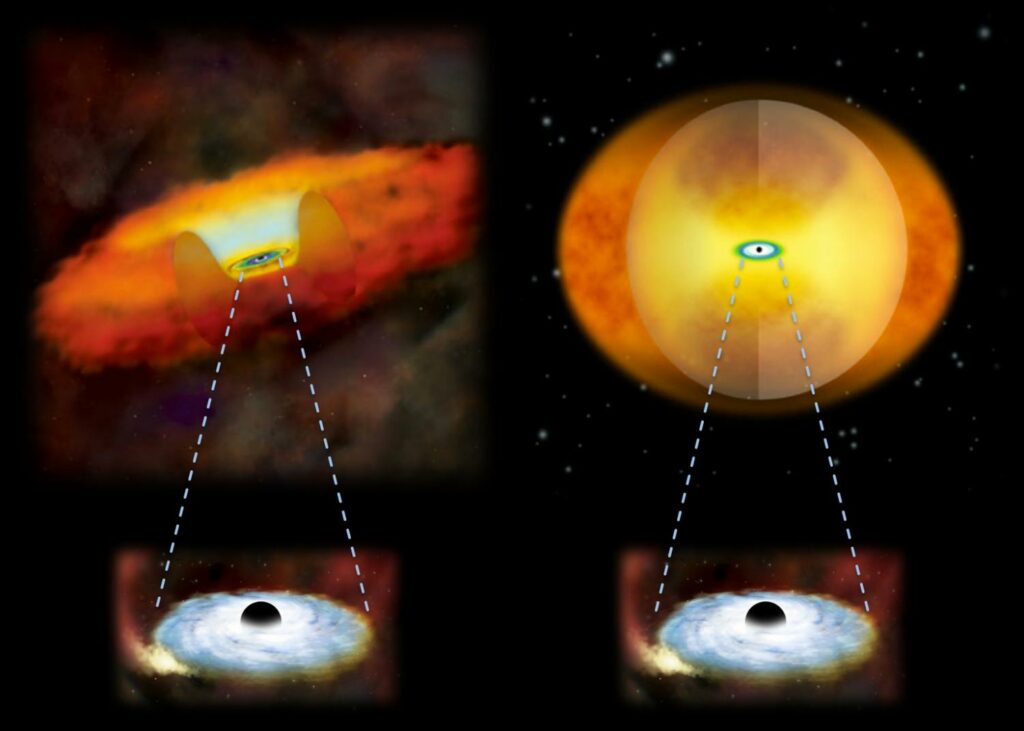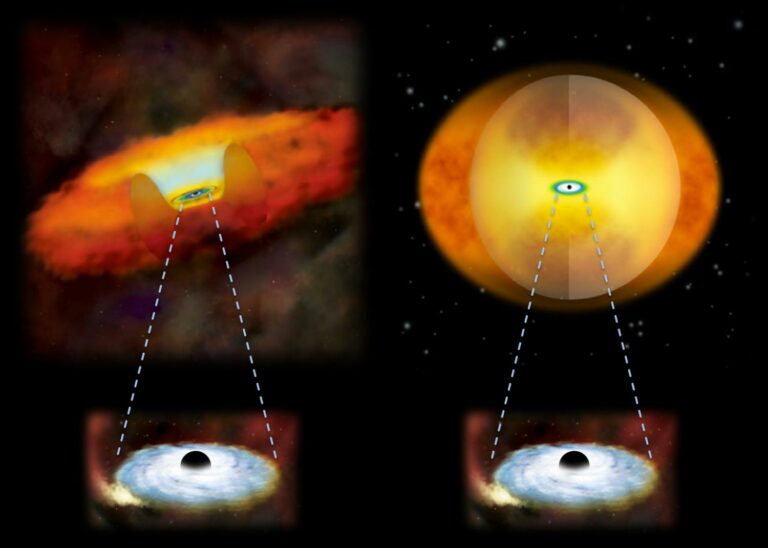Colliding Galaxies Conceal Black Holes
Black holes have often been portrayed negatively in popular culture, with the belief that they consume everything in their surroundings. However, this is not entirely accurate. In reality, black holes can have stars, gas, and dust orbiting around them for extended periods of time, until a significant disruption occurs and pushes the material inward.
One such disruption is the merger of two galaxies. When galaxies combine and their central black holes approach each other, the gas and dust in the vicinity are forced onto their respective black holes. This process releases a tremendous amount of high-energy radiation as the material spirals rapidly towards the voracious black hole, transforming it into what astronomers refer to as an active galactic nucleus (AGN).
A recent study conducted using NASA’s NuSTAR telescope has shed light on the late stages of galaxy mergers. During this phase, an immense amount of gas and dust falls towards the black hole, causing the AGN to become heavily obscured. The gravitational influence of the merging galaxies slows down the rotational speeds of the gas and dust that would otherwise be freely orbiting. This loss of energy ultimately leads to the material falling onto the black hole.

Lead author of the study, Claudio Ricci, explains that the more advanced the merger is, the more obscured the AGN becomes. Galaxies that are in the later stages of merging are completely enveloped in a cocoon of gas and dust.
Ricci and his colleagues observed the penetrating high-energy X-ray emissions from 52 galaxies, with approximately half of them being in the later stages of merging. The sensitivity of the NuSTAR telescope in detecting the highest-energy X-rays played a crucial role in determining the amount of light that manages to escape the sphere of gas and dust surrounding an AGN.
Overall, this study provides valuable insights into the behavior of black holes during galaxy mergers and highlights the significant role played by gas and dust in shaping the evolution of these cosmic phenomena.
The findings of the research were published in the Monthly Notices of the Royal Astronomical Society. Scientists conducted a comparison between the observations made by NuSTAR and the data collected from NASA’s Swift and Chandra, as well as ESA’s XMM-Newton observatories. These observatories focus on studying the lower energy components of the X-ray spectrum. If a galaxy is found to emit high-energy X-rays but lacks low-energy X-rays, it indicates that an AGN is heavily obscured.
This study contributes to the confirmation of the long-held notion that an AGN’s black hole primarily consumes matter while concealed during the later stages of a merger.
Ricci stated, “During these mergers, a supermassive black hole experiences rapid growth.” These results enhance our comprehension of the enigmatic origins of the connection between a black hole and its host galaxy.
This article is republished from PhysORG under a Creative Commons license. Read the original article.
Do not forget to share your opinion with us to provide you with the best posts !




0 Comments